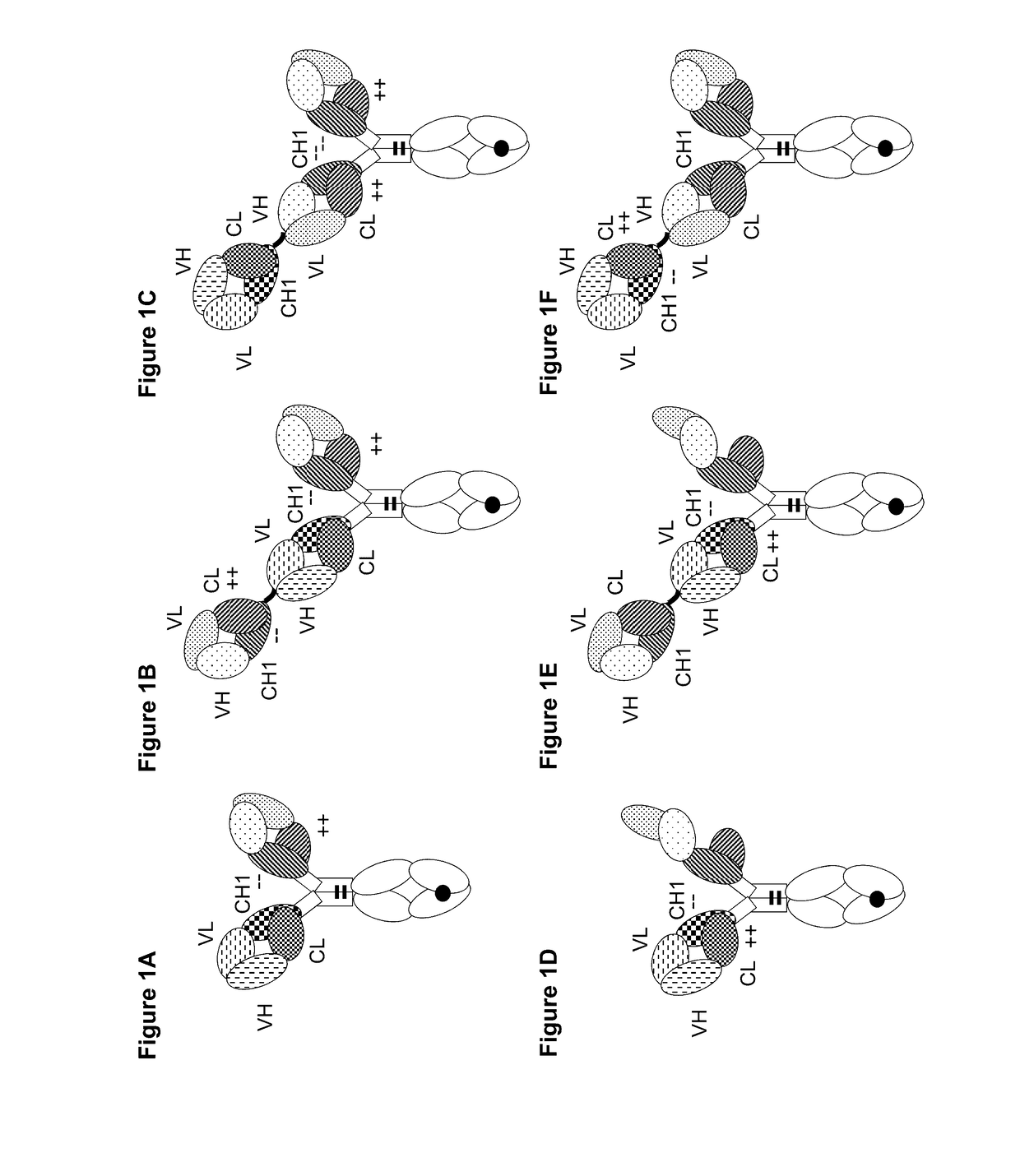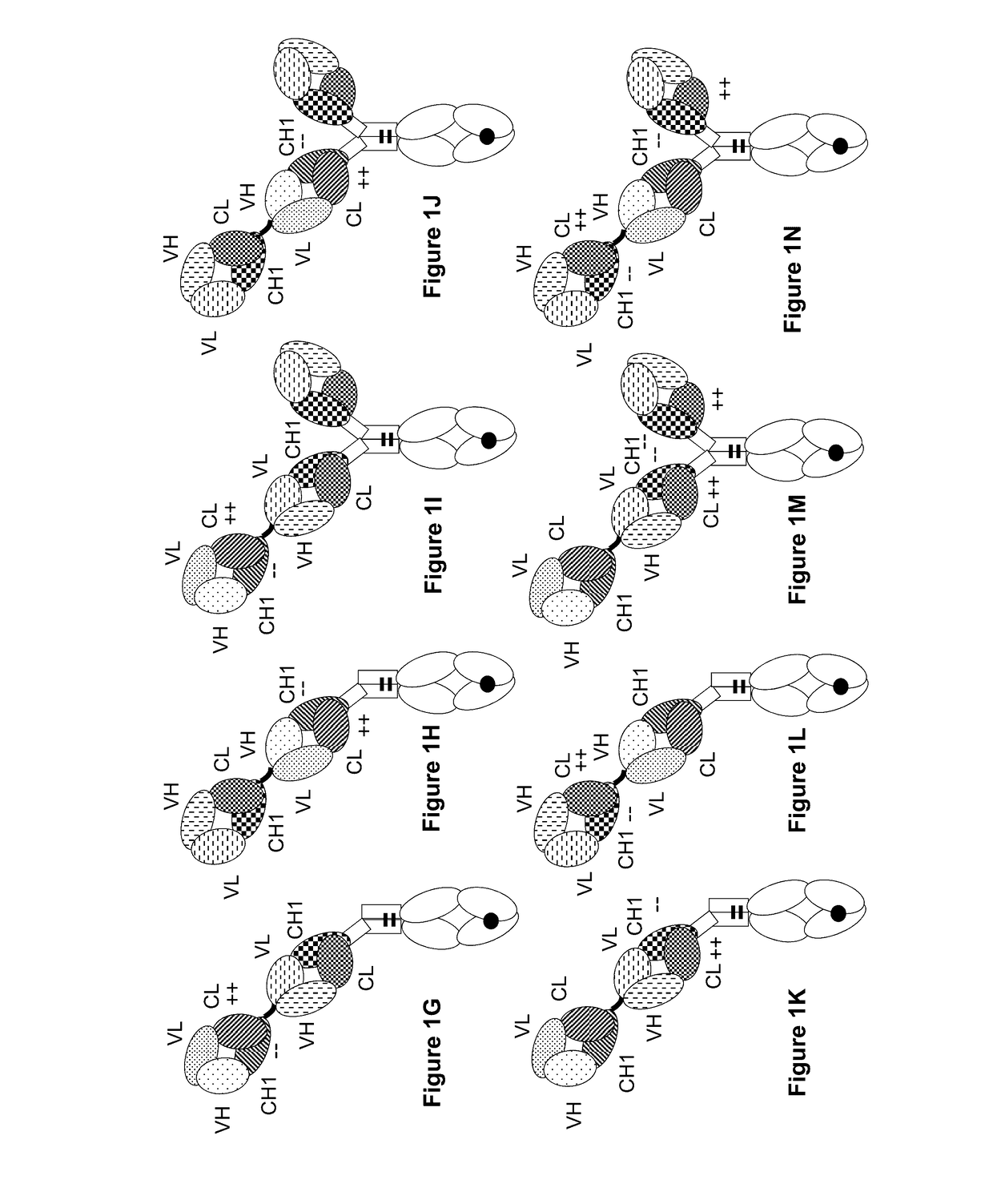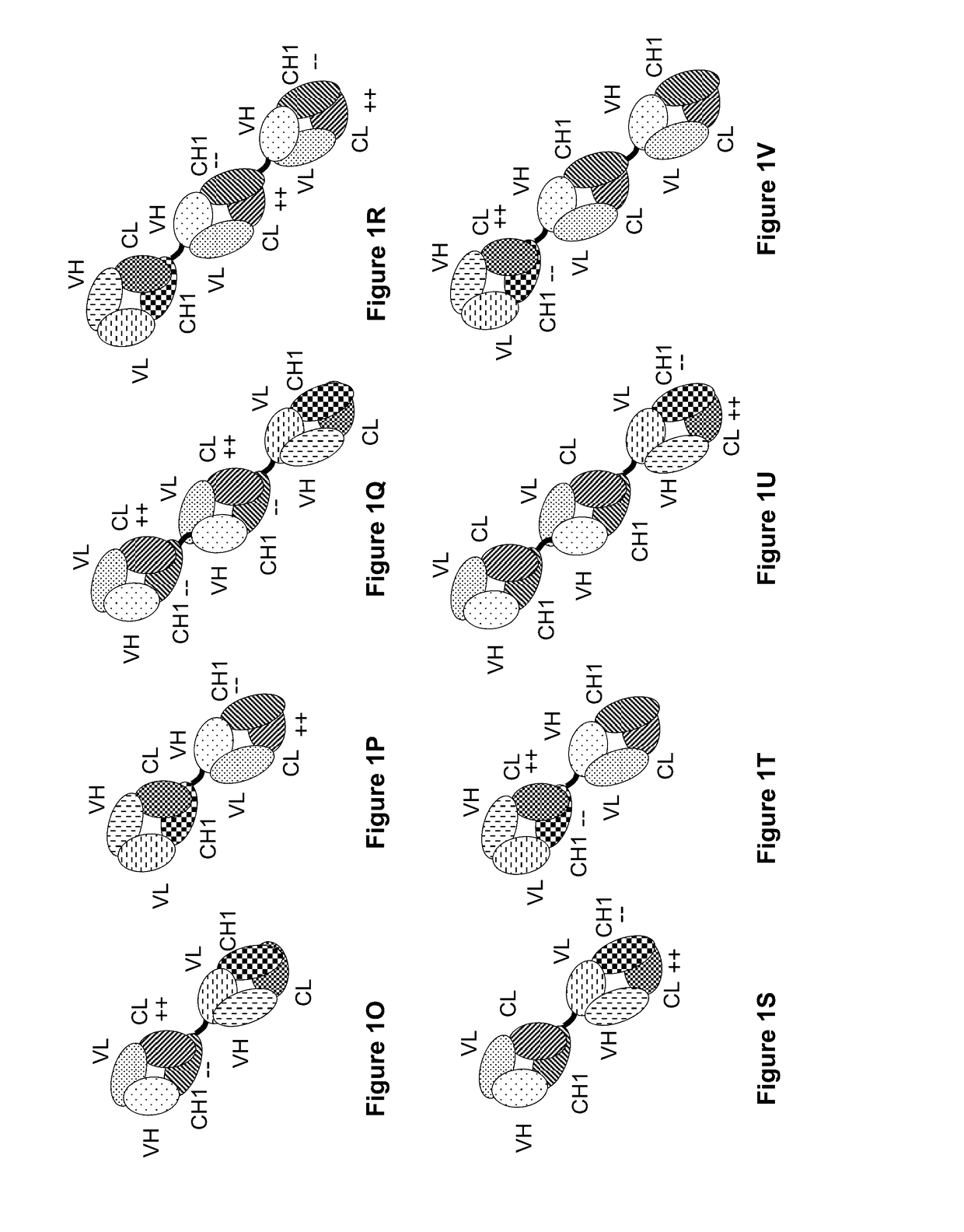Bispecific t cell activating antigen binding molecules
a technology of binding molecules and t cells, applied in the direction of peptides, immunological disorders, drug compositions, etc., can solve the problems of igg-like formats, unable to activate the effector mechanism mediated by the fc domain, and suffer from the toxicity of the native effector functions inherent in igg molecules,
- Summary
- Abstract
- Description
- Claims
- Application Information
AI Technical Summary
Benefits of technology
Problems solved by technology
Method used
Image
Examples
example 1
Preparation of anti-mesothelin (MSLN) / anti-CD3 T cell bispecific (TCB) molecules
[0405]The following molecules were prepared in this example; a schematic illustration thereof is shown in FIG. 2A-2F:[0406]A. “2+1 IgG CrossFab, inverted” with charge modifications (VH / VL exchange in CD3 binder, charge modification in mesothelin binders) (FIG. 2A, SEQ ID NOs 22-25).[0407]B. “2+1 IgG CrossFab, inverted” with charge modifications (VH / VL exchange in CD3 binder, charge modification in mesothelin binders, alternative mesothelin binder) (FIG. 2B, SEQ ID NOs 24, 38-40)[0408]C. “2+1 IgG CrossFab, inverted” without charge modifications (VH / VL exchange in CD3 binder, charge modification in mesothelin binders) (FIG. 2C, SEQ ID NOs 24, 41-43).[0409]D. “2+1 IgG CrossFab, inverted” without charge modifications (VH / VL exchange in CD3 binder, charge modification in mesothelin binders, alternative mesothelin binder) (FIG. 2D, SEQ ID NOs 24, 44-46).[0410]E. “1+1 IgG CrossFab, inverted” with charge modific...
example 2
Binding of Mesothelin (MSLN) TCB Molecule to Mesothelin- and CD3-Expressing Cells
[0426]The binding of the MSLN TCB molecule A prepared in Example 1 was tested on mesothelin-positive tumor cells (NCI-H322M cells, Sigma-Aldrich #95111734) and CD3-expressing immortalized T lymphocyte cells (GloResponse Jurkat NFAT-RE-luc2P; Promega #CS176501). Briefly, cells were harvested, counted, checked for viability and re-suspended at 2 million cells per ml in FACS buffer (PBS with 0.1% BSA). 100 μl of the cell suspension (containing 0.2 million cells) were incubated in round-bottom 96-well plates for 30 min at 4° C. with increasing concentrations of the MSLN TCB (4 pM-60 nM for the binding to H322 cells, or 4 pM-300 nM for the binding to Jurkat cells, as indicated), cells were washed twice with cold PBS 0.1% BSA, re-incubated for further 30 min at 4° C. with the Alexa Fluor 647-conjugated AffiniPure F(ab′)2 Fragment Goat Anti-Human IgG, Fcγ Fragment Specific Antibody (Jackson Immuno Research Lab...
example 3
Tumor Cell Lysis Induced by MSLN TCB Molecule
[0427]T-cell killing mediated by the MSLN TCB molecule A was assessed on mesothelin-expressing NCI-H596 (ATCC® HTB-178), AsPC-1 (ECACC 96020930) and BxPC-3 (ECACC 93120816), versus mesothelin-negative NCI-H358 (ATCC® CRL-5807) human tumor cells. Human PBMCs were used as effectors and the killing was detected at 24 h and 48 h of incubation with the bispecific antibody. Briefly, adherent target cells were harvested with Trypsin / EDTA, washed, and plated at density of 25 000 cells / well using flat-bottom 96-well plates one day before the experiment. Cells were left to adhere overnight. Peripheral blood mononuclear cells (PBMCs) were prepared by Histopaque density centrifugation of enriched lymphocyte preparations of heparinized blood obtained from a Buffy Coat (“Blutspende Zurich”). The blood was diluted 1:4 with sterile PBS and layered over Histopaque gradient (Sigma, #H8889). After centrifugation (450×g, 30 minutes, room temperature), the pl...
PUM
| Property | Measurement | Unit |
|---|---|---|
| dissociation constant | aaaaa | aaaaa |
| dissociation constant | aaaaa | aaaaa |
| dissociation constant | aaaaa | aaaaa |
Abstract
Description
Claims
Application Information
 Login to View More
Login to View More - R&D
- Intellectual Property
- Life Sciences
- Materials
- Tech Scout
- Unparalleled Data Quality
- Higher Quality Content
- 60% Fewer Hallucinations
Browse by: Latest US Patents, China's latest patents, Technical Efficacy Thesaurus, Application Domain, Technology Topic, Popular Technical Reports.
© 2025 PatSnap. All rights reserved.Legal|Privacy policy|Modern Slavery Act Transparency Statement|Sitemap|About US| Contact US: help@patsnap.com



